Work in 18th century Venice had echoes of Palladio
 |
| The Chiesa dei Gesuati is seen by many as Massari's masterpiece |
Massari’s legacy in Venice includes the imposing Palazzo Grassi on the Grand Canal and the church of Santa Maria del Rosario, commonly known as the Gesuati, on the Giudecca Canal, which is acknowledged as his masterpiece.
He redesigned Santa Maria della Visitazione - known as the Pietà - the church on the Riva degli Schiavoni famous for its association with the great Baroque composer Antonio Vivaldi, who wrote some of his most famous music while working as a violin teacher at the adjoining orphanage.
Outside Venice, Massari designed villas and churches around Brescia, Treviso and Udine.
His designs, especially his churches and villas, were often influenced by the work of the 16th century Classical architect Andrea Palladio and by Massari’s fellow Venetian, the Baroque sculptor and architect Baldassare Longhena.
Massari was born in the San Luca parish of the San Marco sestiere. His father, Stefano, was a carpenter from a village near Brescia in Lombardy.
Little is known of his early life, although it is thought he may have studied under the supervision of Antonio Gaspari, who may himself have learned from Longhena.
Although it is likely that he had worked on other projects, the first to have been attributed to Massari is a house now known as the Villa Lattes at Istrana in the province of Treviso, which he designed in around 1712 for a wealthy merchant, Paolo Tamagnin.
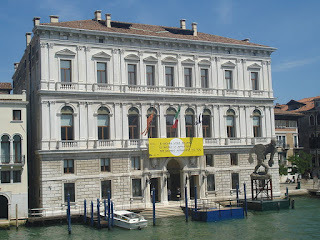 |
| Massari's Palazzo Grassi, on the Grand Canal, has many features of the Classical design style |
He began work on the Gesuiti church after the original architect had died. The project was only in its infancy and the Dominican friars who commissioned the building were so impressed with Massari’s plans that they ditched the drawings left behind by the first architect.
Situated on Fondamenta Zattere in the Dorsoduro sestiere, looking out over the broad Giudecca Canal, the Gesuati pays homage in its design to Palladio’s San Giorgio Maggiore, the landmark church on the small island at the eastern tip of the Giudecca, with its facade of Corinthian columns topped by a triangular pediment.
With its dome and twin adjoining bell towers, meanwhile, it compliments Palladio’s Chiesa del Santissimo Redentore, which overlooks the Giudecca Canal from the opposite bank.
Also in Dorsoduro, Massari worked extensively on Ca’ Rezzonico, a monumental Baroque palace on the Grand Canal that had been designed by Baldassarre Longhena in 1649 but abandoned after the family who commissioned it fell on hard times. Massari was invited to complete the project more than 100 years later after it was bought by Giambattista Rezzonico, whose family were from the Como area of Lombardy.
It was while he was finishing the Ca’ Rezzonico that Massari was hired to design a new Palazzo Grassi on behalf of the Grassi family, who had acquired the building in 1655. The new palace based on Massari’s designs was constructed between 1748 and 1772. Designed along academic classical lines, it was the last grand palazzo built on the Grand Canal before the fall of the Venetian Republic.
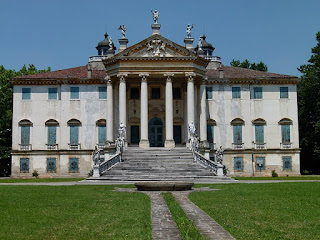 |
| Massari's villas, such as the Villa Giovanelli near Padua, often echoed the style of Andrea Palladio |
The facade, which again has echoes of Palladio in its Corinthian columns and triangular pediment, was not actually finished until the early 20th century, although it is faithful for the most part to Massari’s design.
Other works in Venice attributed to Massari include the church of San Marcuola on the Grand Canal in Cannaregio and the facade of what is now the Academy of Fine Arts in Dorsoduro.
Outside Venice, he designed churches in Brescia and its province, in Scorzè near Treviso, and in Udine. He also contributed to the renovation of the cathedrals in Udine and Padua.
When Paolo Tamagnin died in 1734, Massari married his widow, Pisana Bianconi, and settled with her in a house in the Castello sestiere that had been owned by her late husband.
Widowed in 1751 without children, Massari died in 1766 at the age of 79. His body was buried in the Tamagnin tomb in the church of San Giovanni in Bragora in Castello.
Travel tip: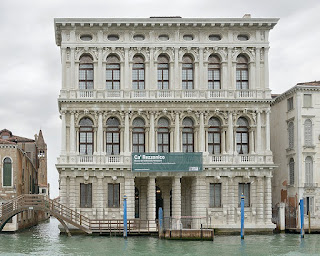
Massari finished the Ca' Rezzonico palace in
accordance with Baldassare Longhena's designs
Ca’ Rezzonico, which Massari finished according to the designs of Baldassare Longhena, displays paintings by the leading Venetian painters of the 18th century, including Francesco Guardi and Giambattista Tiepolo. The latter was commissioned to paint the ceilings of two salons in 1758, to celebrate the election of Carlo, the younger brother of Giambattista Rezzonico, as Pope Clement XIII, and the marriage of Ludovico Rezzonico to Faustina Savorgnan, uniting the two richest families in Venice. The last of the Rezzonico family to live in the palace died in 1810, since when it has been bought and sold many times. The English poet Robert Browning died in the Ca’ Rezzonico in 1889 at the time it was owned by his son, Robert Barrett Browning. For a period in the 20th century it was the home of Cole Porter, the American composer and songwriter, who rented it for $4,000 a month. Nowadays, it houses the Museum of 18th Century Venice, hosting many precious examples of the furniture and decorations of the period, it has a wealth of Venetian paintings, including works by Tiepolo, Canaletto and Guardi.
Travel tip: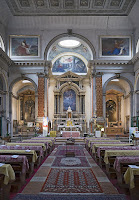
The interior of San
Luca Evangelista
The church of San Luca Evangelista in the San Marco sestiere, where Giorgio Massari was baptised, can be found on Rio de San Luca, a side canal off the Grand Canal behind Palazzo Grimani di San Luca. The church itself, which dates back to the 11th century, when it was the family place of worship for the Dandalo and Pizzamano families. It has a simple facade but a richly decorated interior that features frescoes by Sebastiani Santi and altarpieces by Paolo Veronese and Palma il Giovane.
Also on this day:
54: The death of Roman emperor Claudius
1815: The execution of Joachim Murat, former King of Naples
1884: The birth of anarchist Mario Buda
1899: The birth of sportsman and entrepreneur Piero Dusio
1985: The death of silent movie star Francesca Bertini
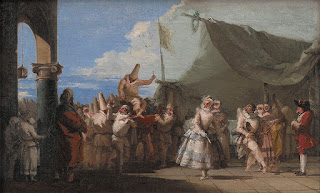
_-_VIA_CRUCIS_II_-_Jesus_carries_his_cross_by_Giandomenico_Tiepolo.jpg)
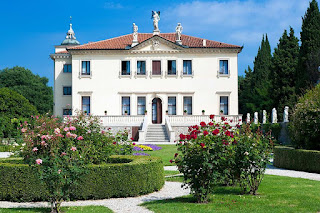







.jpg)
